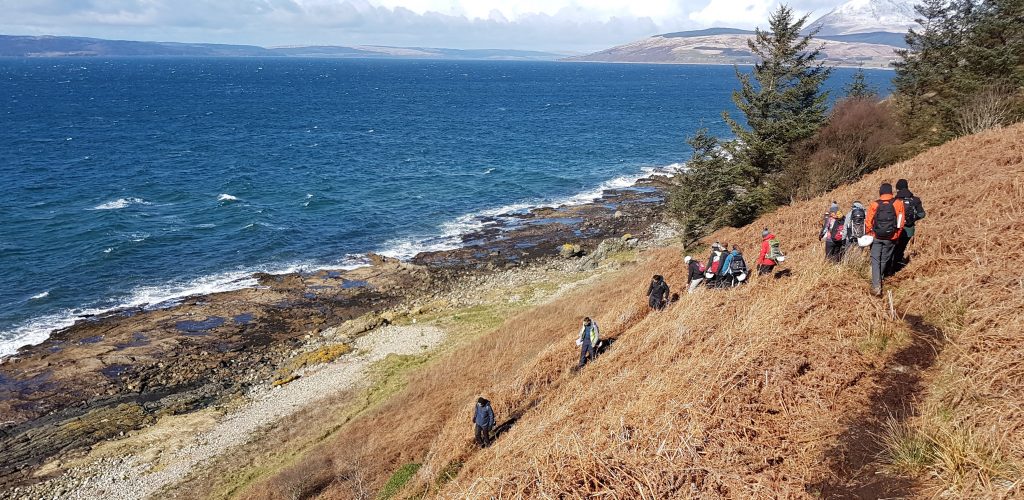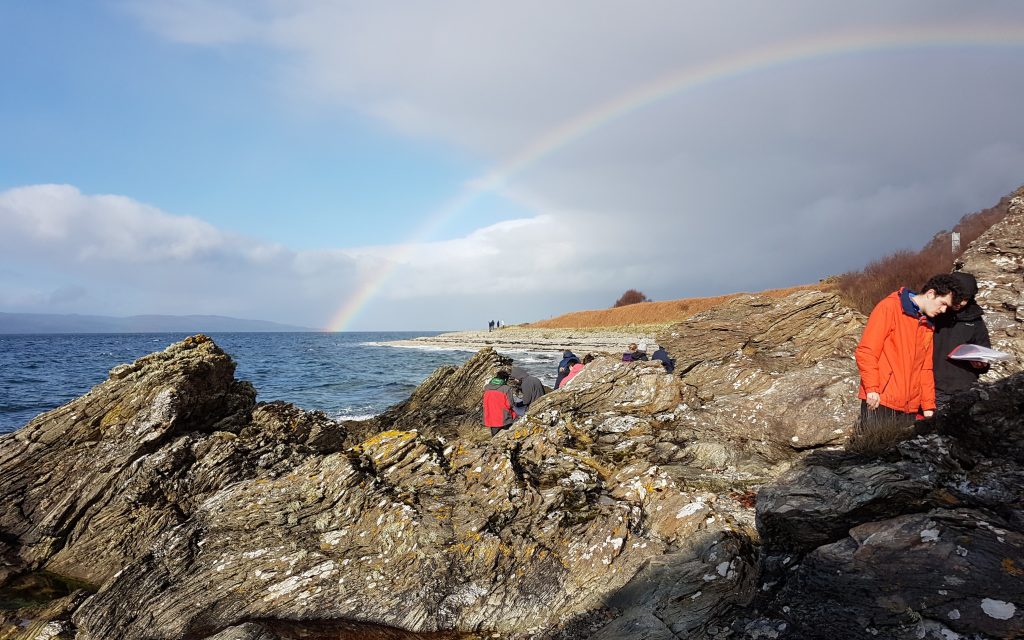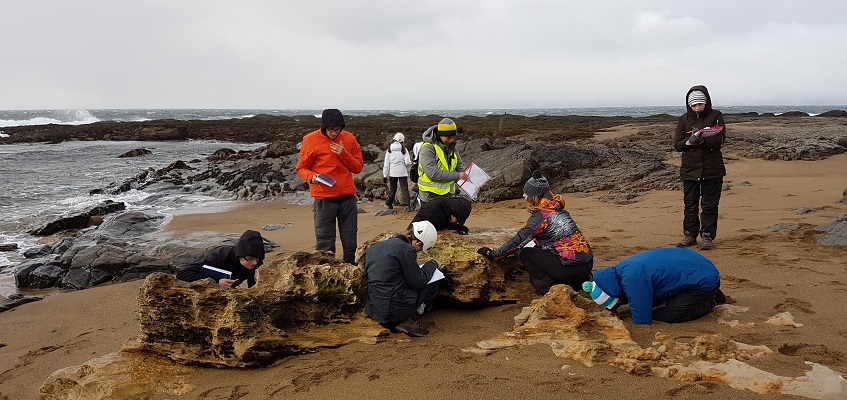The end of Lent term brings with it the start of the undergrad fieldtrip season. The first group of 1A’s left bright and early on Thursday morning for the Ayrshire coast in Scotland, ready for their first proper fieldtrip away from Cambridgeshire.
The coach journey was very long, but we eventually made it to the Mercure hotel in Ayr, an upgrade we were informed from the old train station hotel.
The following morning dawned and we headed out along the Ayrshire coastline with the 1A’s exploring fining-up sequences in graded “grey” rocks, identifying beautiful pillow basalts and learning how to take strike and dip measurements using a compass clino – a new skill for many of them. Lunch was a rainy affair but some savvy students quickly found the driest, most over-hanging pillow basalt to shelter beneath and avoid the worst of the Scottish weather.

With the weather closing in, there was some worry about the ferry sailing times to the Isle of Arran, but all was well and we made it across the Firth of Clyde and over to Blackwaterfoot in the south-west of Arran. We were based there, at the Kinloch Hotel for the remainder of the trip.
Led by Sasha Turchyn, Liz Harper and John Rudge, we had some wonderful demonstrations in the field, including the ‘droopy nosed’ folding of the Dalradian rocks, acted out in the field with a selection of scarves borrowed from the undergrads.
As always, this trip was a geological tour across the equator, covering rocks from 600 to 60 million years old. The first years disentangled the perplexing tale of the old Dalradian deep water turbidites with multiple fining up beds and complex folding. They walked along the coastline, up through geological time, exploring evidence of Arran changing latitude. Starting in the Old Red Sandstone with its large conglomerates through to exploring various mudstone and limestone units containing lots of fantastic fossils, and even some nicely layered volcanic ash with volcanic bombs.

They saw dykes, sills with hexagonal cooling patterns (like the Giants Causeway), fossil lightning strikes (or fulgurites) and, after clambering up through some trees along a muddy path, the notorious ‘pogo-saurus’ trace fossil footprint: the one, lonely, pre-dinosaur footprint impression on the stretch of coastline we visited.
Most evenings were rounded off, geologically, with student presentations on a topic of geological interest from the day out in the field. But as we know, geology isn’t all work and the demonstrators put together a pub quiz for the leaders and students with questions spanning the full range of important topics from: name an Arran whisky to did Arnold Schwarzenegger gain his first Mr Universe title before or after the Apollo landings?

On the final day the students had a choice of activities: climb the highest peak on the island (Goat Fell), fossil hunting in the hope of finding an elusive trilobite or a meander up the beautiful Glen Rosa glacial valley. Unfortunately no trilobites were found and the summit of Goat Fell was a little too snowy to reach, but we got to see a bit more of Arran! The trip was rounded off with some groups visiting the brewery and cheese shop, and then all the undergrads getting together for a banana and chocolate BBQ on the beach. A nice end to a lovely fieldtrip.
Hopefully we will be seeing many of these 1A’s returning for second year Earth Sciences!
Victoria Honour PhD 2015-
Photo credits: John Rudge


